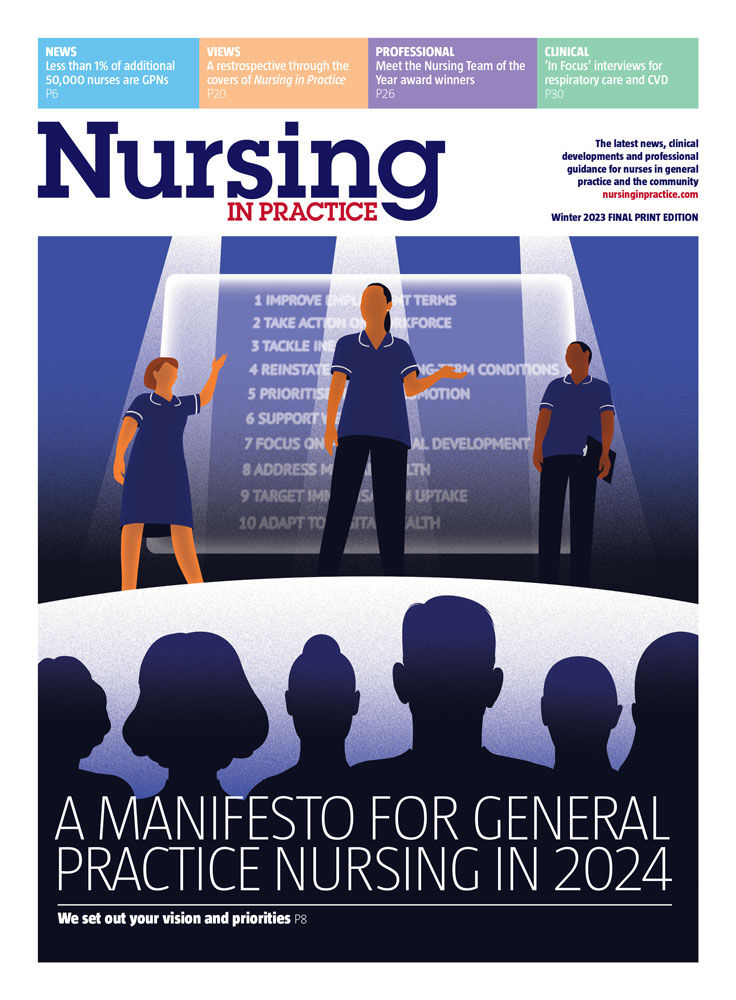Epilepsy is a non-communicable, neurological disorder affecting approximately 50 million people worldwide.1 In the UK, around600,000 people are diagnosed with epilepsy and treated pharmacologically with anti-epileptic drugs (AEDs); amounting to approximately one-in-103 people. Around 23% of this population will be women of child-bearing potential (12-50 years) equating to approximately 139,000 women in the UK.2
This is not a single disease; it is a multifaceted heterogeneous disorder resulting from multiple genetic and non-genetic factors.3 The clinical picture preceding the diagnosis is the occurrence of unprovoked, unpredictable, stereo-typical seizures resulting from abnormal and excessive cortical neuronal discharges. Epilepsy classification is determined by an epilepsy specialist doctor and is either genetic generalised epilepsy (involving both cerebral hemispheres at the outset) or focal epilepsy (the seizure starts in a localised area in the brain).4 Correct classification is imperative in guiding investigations, treatment, prognosis and support. If AEDs are required, the choice for women will be influenced by potential teratogenicity, interactions with hormonal methods of contraception, impact on weight, cosmetic effects and tolerability.4
Unfortunately, the quality of services for people with new or established epilepsy in the UK is fragmented.2 This has contributed to lack of seizure classification, inappropriate prescribing and a misdiagnosis rate currently standing at 20-31%.5 For women of child-bearing potential this has dramatic implications as not only could they have another potentially life threatening condition that has remained untreated, they could also be exposing pregnancies unnecessarily to AEDs.
To add to their health inequalities, lack of preconception and pregnancy specialist support for women with epilepsy (WWE) is a recurring feature in the maternal mortality reports. In the triennium 2009 to 2012, seizures or epilepsy attributed to 14 maternal deaths in the UK during pregnancy and the following six weeks; a further 12 women died between six and 52 weeks following birth.6 Women from marginalised groups were at an increased risk of morbidity but also women who had been fearful about exposing their pregnancy to AEDs.6
Ideally, every WWE of child-bearing potential should be offered a continuum of care to provide opportunities for diagnosis and treatment review, folate supplementation, contraception, pregnancy, breast feeding, safe parenting and lifestyle advice. This proactive approach to care encourages women to be active participants in their management and empowers their decision making when it comes to risk assessment for treatment in future planned pregnancies. If AEDs are required, specialists strive to treat women with the safest AED for pregnancy exposure, preferably in monotherapy at the lowest therapeutic dose.
Impact of pregnancy on epilepsy
Optimal preconception seizure control is a predetermining factor for seizure stability during pregnancy. A structured literature review determined that WWE who had been seizure free for nine months prior to delivery were more likely (84-92%) to remain seizure free during pregnancy7. This is mirrored in epilepsy clinical practice, when a woman has active epilepsy despite taking one or more AED and/or focal epilepsy, seizure instability is more likely. This may for some women be due to adherence issues related to AEDs. A UK study looked at secular trends in AED prescribing during pregnancy between 1994 and 2009; data indicated that WWE were twice as likely to stop receiving AEDs (Hazard Ratio (HR) 2.00, 95% Confidence Interval (CI) 1.62-2.47) when compared to non-pregnant women.8 The reasons for poor adherence with AEDs are multi-factorial but with the upgrading of government warnings about the potential risk of harm to the developing fetus with sodium valproate pregnancy exposure,9 women are understandably fearful about taking any AEDS.
Evidence from maternal mortality reports highlights the need for professionals to work together to optimise care for WWE 6. If a woman reports active epilepsy despite being prescribed AEDs, a sensitive enquiry from the community midwife about medication behaviour should be made. Subsequent referral with her consent for urgent medication management support from her multi-professional care team could be an important determinant on her pregnancy outcome.
For WWE experiencing morning sickness, it is important ingestion of AEDs is not affected, therefore in consultation with the prescriber, medication times can be adjusted. For persistent vomiting/hyperemesis, an anti-emetic and admission for hydration and AED administration intravenously may be required. Pharmacokinetics of AEDs can be further compromised in pregnancy due to physiological changes in drug distribution, metabolism and elimination. It is difficult to foresee the individual impact this will have on seizure control. There is evidence to suggest routine monitoring of serum AED levels (especially lamotrigine) but the possible benefits gained in this assisting clinical monitoring have to be balanced against the risk of heightened anxiety to the pregnant woman through the often protracted wait for results and subsequent management recommendations.
The impact of epilepsy on pregnancy
Data published by Harden et al7 suggested there is no conclusive evidence of an increase risk of obstetric complications related to epilepsy, however if WWE smoke during pregnancy, there appears to be a substantial increased risk of preterm labour and delivery. A subsequent extensive systematic review and meta-analysis identified a small but significant risk for obstetric complications in WWE but reported inconsistency of confounding factors including smoking which may have influenced the findings.10 While acknowledging WWE may have a small increased risk of obstetric complications, it is imperative they do not become so fearful of possible risks that it impacts on their physical and mental well-being.
Impact of epilepsy on the developing fetus and the pregnant woman
Uncontrolled tonic-clonic seizures are potentially hazardous to the mother and her developing fetus as they may cause fetal heart rate deceleration, periventricular haemorrhage, preterm delivery or fetal demise, however evidence based information is lacking in this area.11 WWE are understandably concerned regarding the possible consequence of the impact of seizures on the health of their developing baby and can feel torn between the risk of seizure return and the consequence if they were to stop their AEDs. In clinical practice it is evident that the majority of WWE in consultation with their care providers continue AEDs during pregnancy to reduce the risk of seizure recurrence. It is important for community midwives to consider the history behind the decision-making. The onset of the woman’s epilepsy may have been dramatic, emotional and life changing and accompanied by a cycle of bereavement and post traumatic stress. It may have had implications on cognition, mental health, relationships, sexuality, fertility, safety, independence, driving, education and employment. Unpredictable seizure status because of pregnancy may rekindle traumatic emotions, therefore vigilant individualised medication management by epilepsy specialists is recommended to reduce the risk of seizures and promote well-being.
Information of risks to the developing fetus
Despite an increased risk of fetal abnormalities associated with AED exposure during pregnancy, the majority of WWE taking AEDs will have healthy babies born at term without fetal abnormalities or adverse effects on childhood cognitive development.4 To inform women accurately, the prospective epilepsy registers have collated significant data to enable more accurate counselling regarding individual risks associated with the different AEDs.12 The risks to the fetus are influenced by the type of AED, the dosage, whether prescribed in mono or polytherapy, increasing dose at the time of conception and a parental history of major congenital malformations.13
Sodium valproate is likely to be the most teratogenic of all the AEDs, especially when prescribed in doses exceeding 800 milligrams daily or when prescribed in polytherapy.14-15 The Medicines Health product Regulation Authority have also upgraded their warning about the risk to children exposed to valproate to include information about the high risk of developmental disorders (approximately 30-40%) and an approximate 10% risk of a baby having a major congenital malformation.9 This causes complex dilemmas for both patients and prescribers as sodium valproate is such an effective AED for idiopathic generalised (genetic) epilepsies and alternative treatments may have been ineffective and negatively impacted on every aspect of the woman’s life and increased their risk of an epilepsy related death.
While it recommended that WWE are referred urgently to their epilepsy team and consultant obstetrician and offered expert fetal anomaly screening, it is important for community midwives to look beyond the risk factors and empower the woman to be involved in all aspects of their individualised care provision in order for this to be a positive life experience. Overestimation of the teratogenic risk associated with AEDs from women and their clinicians can result in unnecessary anxiety, inadequate treatment and needless termination of pregnancy.16-17
How to manage expectant mothers with epilepsy
The first professional contact in pregnancy for a WWE is usually at the booking appointment. This places the community midwife in a prime position for effective history taking. The use of a resource pack designed for this purpose will help prompt the midwife to collate a concise clinical picture of a woman’s epilepsy and treatment history.18 Asking her consent to share a copy with the fetal medicine obstetrician and epilepsy specialist team (urgently if there have been recent seizures) will promote an early assessment by consultants if required. The midwife should record and follow up any referrals made in an agreed time span. Following any specialist assessment, WWE should have the opportunity to make informed decisions about their subsequent care, screening and treatment in partnership with their healthcare team.19 If seen by other health professionals, WWE should be encouraged to request documentation in the hand held maternity records; this is an effective communication tool to promote joined up care.
It is important to signpost WWE to the UK Epilepsy & Pregnancy Register (see Resources section).
Although professionals can register the pregnancy with the woman’s informed consent, self registration puts the woman in control and encourages her to seek accurate balanced information about her particular AED exposure risk.
Further advice is summarised in the following points:
-
· Signpost WWE who smoke to smoking cessation support.
· WWE who take AEDs are advised to continue folic acid 5mg once daily until at least 12 weeks gestation. AED can lead to depletion of vitamin D, therefore offer screening at booking.
· Embrace the opportunity of providing continuity in midwifery care to reduce the risk of obstetric complications.
· WWE are at increased risk of psychiatric disorders, therefore a regular enquiry about mental/social well-being and referral for appropriate support is imperative.
· Provide vigilant community follow-up of non attendees as this may be a red flag for a deteriorating medical condition.
· Encourage women to complete their own risk assessment for their home, work and future hospital admission – epilepsysociety.org.uk/risk-assessment. Further accurate advice to initiate discussion about all aspects of epilepsy, first aid, safety around water, forums for support, and information specifically for women with epilepsy can be obtained from: epilepsy.org.uk/ and epilepsysociety.org.uk/.
· During any admission to hospital it is recommended that women are not placed in a single room and receive one to one care in labour.
· Reassure women, epilepsy is not an indication for induction of labour/caesarean section unless they are experiencing frequent tonic-clonic or prolonged focal seizures before delivery.4 Encourage self-completion of their birth plan and advise avoidance of pethidine in labour as it can lower seizure threshold.
· Ensure WWE always have an ample supply of their AEDs and that they take these at the prescribed times, including in labour. An anti-emetic can be prescribed if nausea is experienced to optimise absorption of AEDs
· Midwives can facilitate discussions about caring for babies safely by using this tool – epilepsy.org.uk/sites/epilepsy/files/201303-F059.03Epilepsy-caring-children.pdf.
↓Article continues below this sponsored advert↓ Could 2024 be the year you lift the winner’s trophy? Enter now to find out!↑Advertisement↑
Could 2024 be the year you lift the winner’s trophy? Enter now to find out!↑Advertisement↑· Women can be encouraged to breastfeed despite taking AEDs. Close surveillance is recommended if the baby is preterm, jaundiced, or if AEDs were started in late pregnancy or following delivery.20 If AEDs are prescribed in high doses/combination therapy, advise parents to obtain paediatric advice urgently if the baby is excessively sedated, develops rash or breathing difficulties.21
· Postnatal visits are an opportunity to provide advice about suitable contraception when co-prescribed AEDs,22-23 folic acid supplementation and timely preconception counselling referral before further pregnancies.
· For some types of epilepsy there is an increased risk of inheritance. Information and advice can be obtained from – ilae.org/Commission/genetics/documents/GeneticsPamphlet-2013.pdf
Conclusion
Caring for pregnant women with epilepsy is challenging and rewarding. To prevent inequalities in care provision to this amazing group of woman, community midwives have a pivotal role in normalising their pregnancy which can be lost in the medicalisation of their health condition. It is imperative that information and advice provided to women is topical and evidence based. Caring for a woman with epilepsy is a great opportunity for community midwives to increase their knowledge about this complex condition in order for them to offer optimal support.
Resources
UK Epilepsy & Pregnancy Register – epilepsyandpregnancy.co.uk, freephone 0800 3891248 or text ‘Join’ to 07585 509 789.
References
1. World Health Organisation. Epilepsy fact sheet 999, 2016.
who.int/mediacentre/factsheets/fs999/en/ (accessed 20 February 2016).
2. Joint Epilepsy Council of the UK and Ireland. Epilepsy prevalence, incidence and statistics, 2011. epilepsyscotland.org.uk/pdf/Joint_Epilepsy_Council_Prevalence_and_Incidence_September_11_(3).pdf (accessed 18 April 2016).
3. Winawer MR, Shinnar S. Genetic epidemiology of epilepsy or what do we tell families? Epilepsia 2005;46 Suppl 10:24-30.
4. Scottish Intercollegiate Guidelines Network (SIGN) 143. Diagnosis and management of epilepsy in adults. A National Clinical Guideline. Edinburgh: SIGN; 2015. (SIGN publication no. 143). [May 2015]. sign.ac.uk (accessed 20 February 2016).
5. National Institute for Health and Clinical Excellence. The diagnosis and management of the epilepsies in adults and children in primary care, 2012. nice.org.uk/guidance/cg137 (accessed 20 February 2016).
6. Knight M, Kenyon S, Brocklehurst P, Neilson J, Shakespeare J, Kurinczuk JJ, eds, on behalf of MBRRACE-UK. Saving Lives, Improving Mothers’ Care – Lessons Learned to Inform Future Maternity Care from the UK and Ireland Confidential Enquiries into Maternal Deaths and Morbidity 2009-12, 2014. National Perinatal Epidemiology Unit, Oxford.
7. Harden C, Hopp J, Ting T, Pennell P, French J, Le Guen C, et al. Practice Parameter update: Management issues for women with epilepsy-Focus on pregnancy (an evidence-based review): Obstetrical complications and change in seizure frequency Report of the Quality Standards Subcommittee and Therapeutics and Technology Assessment Subcommittee of the American Academy of Neurology and American Epilepsy Society. Neurology 2009;73(2):126-132.
8. Man SL, Petersen I, Thompson M, Nazareth I. Antiepileptic Drugs during Pregnancy in Primary Care: A UK Population Based Study. Plos ONE 2012;7(12):1.
9. Medicines and Healthcare products Regulatory Agency (MHRA). Drug Safety Update, 2016. gov.uk/drug-safety-update/valproate-and-of-risk-of-abnormal-pregnancy-outcomes-new-communication-materials (accessed 15 February 2016).
10. Viale L, Allotey J, Cheong-See F, Arroyo-Manzano D, Mccorry D, Thangaratinam S, et al. Epilepsy in pregnancy and reproductive outcomes: A systematic review and meta-analysis. The Lancet 2015;386(10006):1845-1852.
11. Tatum W. Balancing the risks to the fetus from epileptic seizures and antiepileptic drug exposure in pregnancy. Expert Review Of Neurotherapeutics 2009;9(12):1707-1708.
12. Tomson T, Battino D, Craig J, Hernandez-Diaz S, Holmes L, French J, et al. Pregnancy registries: Differences, similarities, and possible harmonization. Epilepsia 2010;51(5):909-915.
13. Tomson T, Battino D, Bonizzoni E, Craig J, Lindhout D, Vajda F, et al. Fast track — Articles: Dose-dependent risk of malformations with antiepileptic drugs: an analysis of data from the EURAP epilepsy and pregnancy registry. Lancet Neurology 2011; 10609-617.
14. Adab N. Common antiepileptic drugs in pregnancy in women with epilepsy. Cochrane Database Of Systematic Reviews, 2015.
15. Baker G, Bromley R, Briggs M, Cheyne C, Cohen M, Clayton-Smith J, et al. IQ at 6 years after in utero exposure to antiepileptic drugs: A controlled cohort study. Neurology 2015;84(4):382-390.
16. Sanz E, Gómez-López T and Martínez-Quintas M. ‘Perception of teratogenic risk of common medicines’. European Journal Of Obstetrics Gynecology And Reproductive Biology 2001;95(1)127-131.
17. Widnes S, Schjott J and Granas A. ‘Risk perception and medicines information needs in pregnant women with epilepsy – A qualitative study’, Seizure: European Journal of Epilepsy 2012;21:597-602.
18. Morley K and Irwin B. HealthE mum-to-be working party. HealthE mum-to-be Obstetrics Pack, 2013. Epilepsy Action. epilepsy.org.uk/sites/epilepsy/files/campaigns/20130107EpilepsyActionObstetricsPack.pdf (accessed 18 April 2016).
19. National Institute for Health and Clinical Excellence. Intrapartum care: care of healthy women and their babies during childbirth (CG190), 2014. nice.org.uk/guidance/cg190/resources/intrapartum-care-for-healthy-women-and-babies-35109866447557 (accessed 18 April 2016).
20. Sabers A, Tomson T. Managing antiepileptic drugs during pregnancy and lactation. Current Opinion in Neurology 2009;22(2):157-61.
21. Spencer B. Medications and Breastfeeding for Mothers With Chronic Illness. JOGNN: Journal Of Obstetric, Gynecologic & Neonatal Nursing 2015;44(4): 543-552.
22. Faculty of Sexual & Reproductive Health (FSRH). Antiepileptic Drugs, CEU Statement, Faculty of Sexual and Reproductive Healthcare Clinical Effectiveness Unit 2010;1-5.
23. Faculty of Sexual & Reproductive Health (FSRH). Update on newer antiepileptic and antiretroviral drugs and interactions with hormonal contraceptives, 2013. fsrh.org/pdfs/CEUstatementUpdateNewerAntiepilepticAntiretroviralDrugs.pdf (accessed 20 February 2016).








